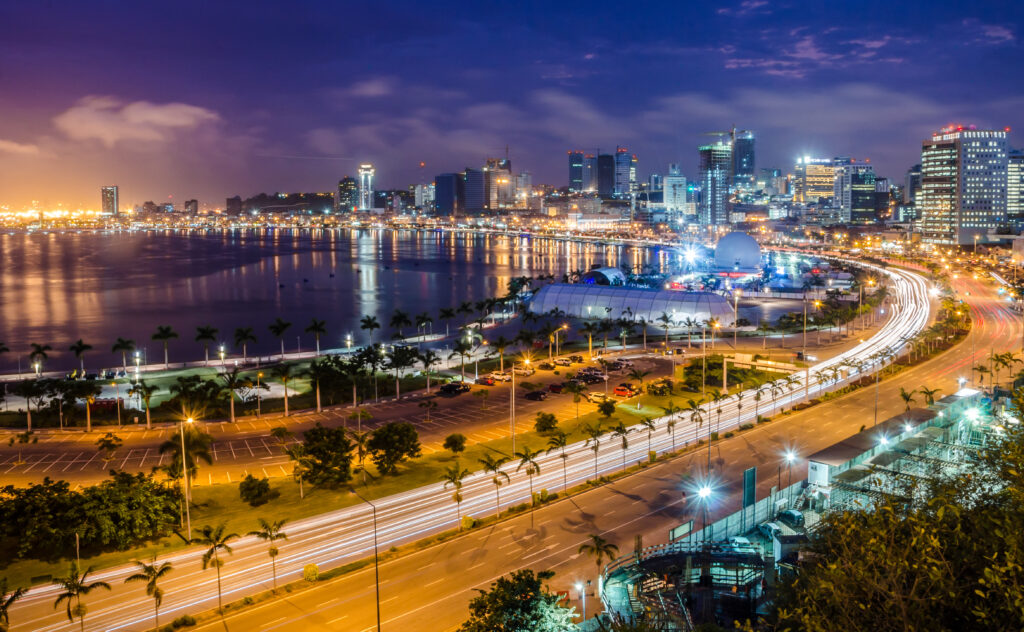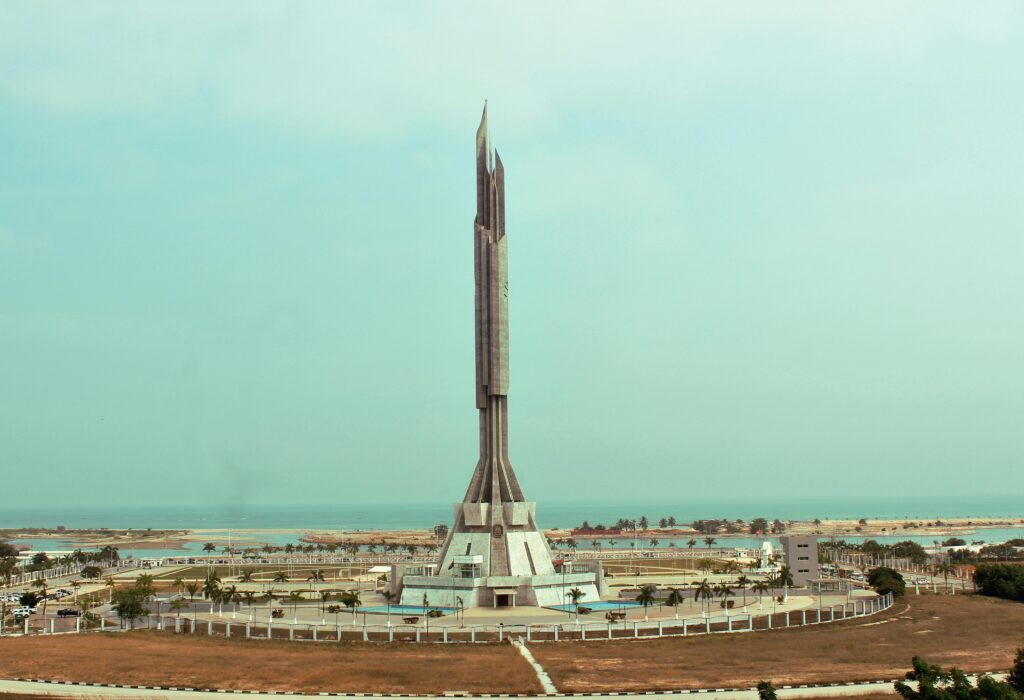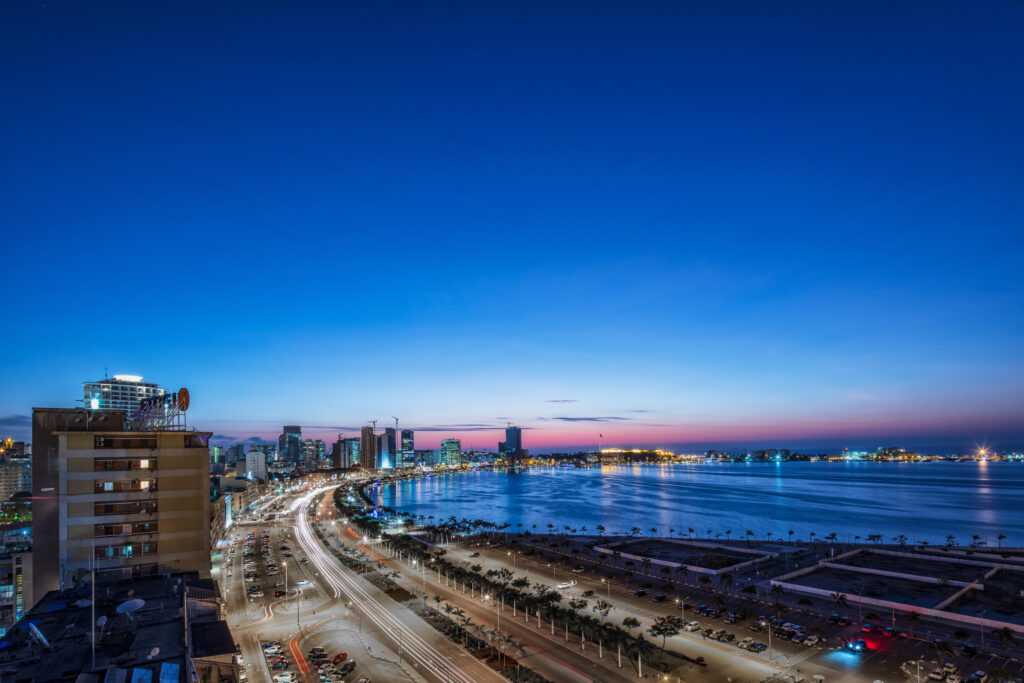The Atlantic wind caresses Luanda like a long-lost lover returning from exile. It rushes through the narrow streets of Ingombota, stirring up dust from forgotten stories, making the palm trees along the Marginal tremble. Here, time sways between the city’s colonial past and the bold modernity of skyscrapers rising defiantly into the African sky. Luanda is not a city you visit—it is a city you tame, a city you listen to.
The pulse of the city: between vibrancy and nostalgia
In the golden morning light, fishermen from Ilha do Cabo pull in their nets with the patience of men who have learned to move with the tides. Their language is a whisper of salt and memory, passed down by the waves that both feed and challenge them. Behind them, old Portuguese buildings with faded facades stand in stark contrast to the glass towers erupting from the ground like promises of an uncertain future.
On Avenida 4 de Fevereiro, car horns compose the frantic symphony of a city always in motion. The blue-and-white taxis, unruly like seabirds caught in a storm, weave chaotically through traffic. Further ahead, in the bustling corridors of Benfica Market, the city explodes in color: the deep red of chili peppers, the fiery yellow of mangoes, the lush green of cassava leaves.
Luanda tells its story in shades, in the scent of spices, in the rhythm of bargaining voices that trade more than prices—they exchange glances, nods, complicity.
This is where Dona Isabel, an elderly fruit vendor, has stood for over thirty years. “I have watched this city grow, seen children become men,” she says, handing me a ripe guava. “Luanda is a tough mother, but a generous one. She gives when you know how to wait.”
The ocean, lover and rival
At Mussulo, the sand is soft as aged linen. Here, Luanda’s chaos fades, replaced by the gentle murmur of waves and the laughter of children playing under the watchful eyes of filao trees. Time slows. A meal is shared—grilled fish, warm funje, and a sip of kissangua, a traditional fermented drink. The sea here nourishes and soothes, but it also reminds—of those who left, those who never returned.
José, an old fisherman with hands weathered by salt and years, gazes at the horizon. “The sea took our fathers and brothers, but it always returns something,” he says. “A fish, a hope, a story.”
Because Luanda is a city of exile and return, a crossroads where souls leave and come back, forever carrying the imprint of a past that never truly fades. Its streets still echo with the footsteps of exiles and revolutionaries, of sailors and merchants, of colonizers and resistors.
Nightfall: another heartbeat
As the sun sinks into the Atlantic, Luanda shifts into another world.
The streets glow, the bars hum with life, and musicians pull out their guitars. In the clubs, kizomba sets bodies ablaze—sensual, hypnotic, unapologetically passionate.
“This is how we dance,” says Miguel, a dance instructor, leading a visitor across the floor in a small hidden bar in Miramar. “Without hesitation, with pride, with fire.”
On rooftop terraces like Skybar or Chill Out, conversations drift into the night, carried by the coolness of Cuca beer and the warmth of old friendships. Laughter echoes under the starlit sky, defying the hardships of yesterday and the uncertainties of tomorrow.
Luanda holds onto life with the fierce determination of those who have known too much absence.
The keepers of memory
But behind the revelry, history watches.
At the National Museum of Slavery, the walls whisper truths the world still struggles to face. The white chapel standing there today once bore witness to the final footsteps of captives before they were taken beyond the ocean.
Manuel, a guide at the museum, speaks with measured intensity. “Luanda was a doorway to the unknown for thousands of souls. We must remember, because this city was built on their history, their strength, their legacy.”
Luanda, a poem still being written
Luanda is not a city frozen in time—it is constantly reinventing itself. It carries the wounds of its past and the hopes of an uncertain future, but it dances still, like the waves that never stop returning to kiss its shores.
If you have the heart of a wanderer, let yourself be swept into its rhythm. Listen as it tells its stories through its streets, its flavors, its silences.
Because Luanda is not a city to simply visit.
It is a city to feel. A city to breathe. A city to live.


